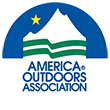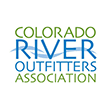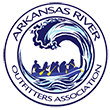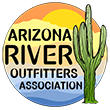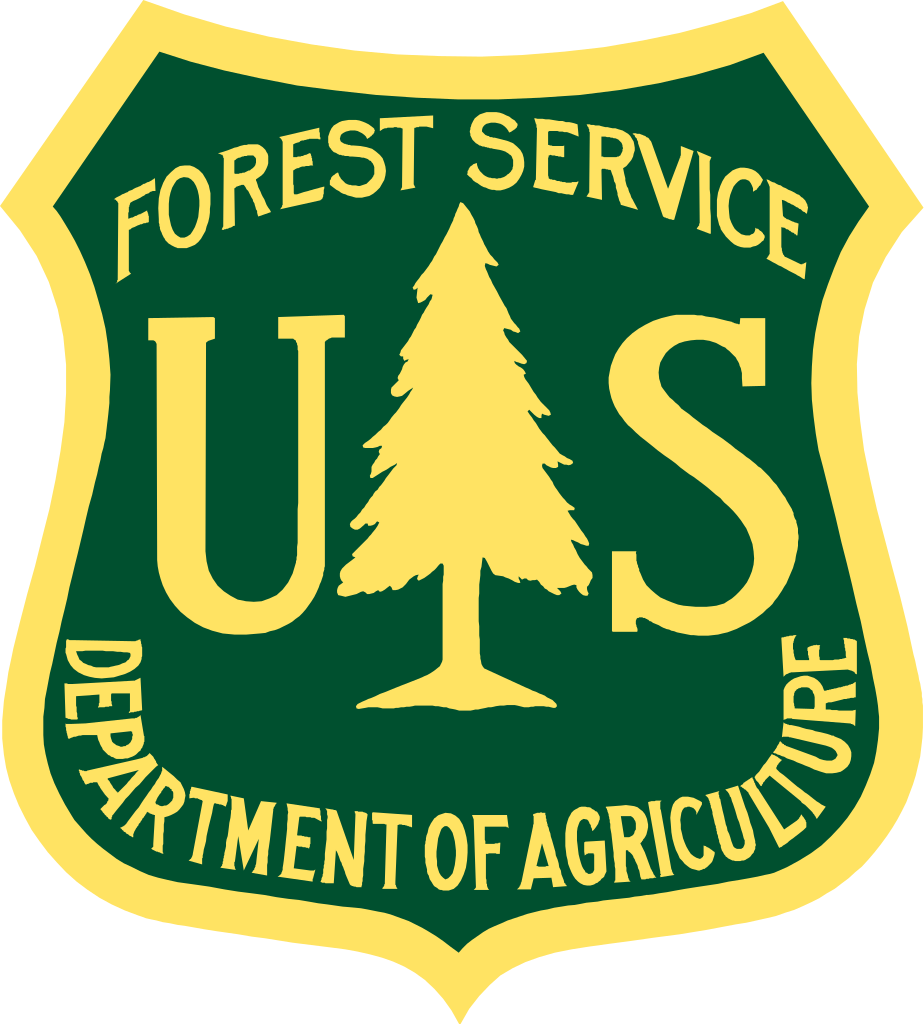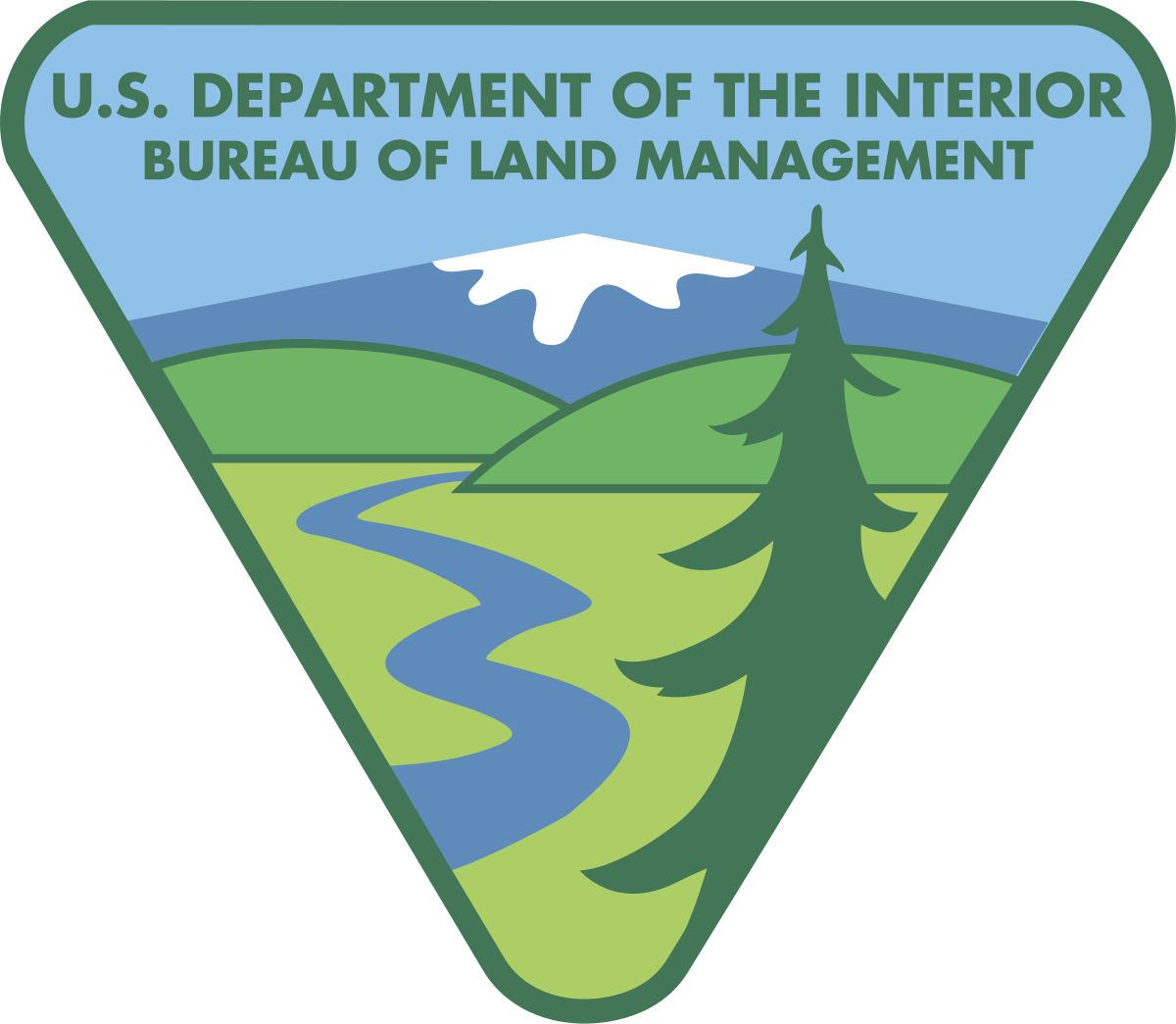Zip-Lining for Family Get Togethers
When relatives come to visit you, there’s a moment of panic of what you’re going to take them to do during their stay but also of excitement and an excuse to get out there to explore. While shopping and eating out are fun, those events tend to blur together over time. If you want your loved ones to remember you as, “Awesome Aunt Mary,” or “Best-Cousin-Ever Rick,” then thinking outside the box will get you on a quick route there. Don’t worry, we’ve got you covered. With humans, the act of exploring together through journeys is one of the common ways that people bond. Think about family vacations, you go somewhere new together and explore with the intent of finding joy in the unknown and making memories. So go ahead, take a vacation day or two from work and bring your relatives zip-lining. They say taking regular vacations makes a more productive and happy employee anyway. Zip-Line Tours Zip-lining is a thrilling and fun event for people of all ages and an increasingly popular outdoor activity of choice. With safe technology and equipment, people can soar through the tree tops and enjoy a bird’s eye view of the sky. The guides are there to keep you safe while teaching you about the environment surrounding the zip-lines for a greater appreciation of nature. If you have a need for speed, or aren’t sure if you like to go past the speed limit, zip-lining will remind you of the excitement of going fast. Don’t worry, if you want to slow down, there’s a brake rope to make you more comfortable. Each person goes one at a time 10,000 – 11,500 feet above sea level down five different zip lines. Glide along the tree tops for 400 to 800 feet and wave hello to your family zipping down next to you. Maybe you’ll catch a glimpse of a hawk, eagle, or the Colorado State Bird—the Lark bunting. Zip-lining is a fun and easy activity for out of town relatives and your relatives down the street. Prepare for lots of laughing, pictures, and life-long memories and you’ll have a great time. Wilderness Aware Rafting offers Zip Line Tours year round near Leadville, CO, with five different and thrilling zip lines. For more information, Contact Us online or call us at 1-800-462-7238.
Understanding Horse Behavior for Horseback Riding
Horseback riding is one of the most popular outdoor activities to enjoy because it’s a great way to explore nature while bonding people and animals. Before you head off to your next horseback riding trip, it’s important to understand how horses communicate and what their behavior is like. When humans and animals understand each other, the bond and experience of horseback riding is even greater and more memorable. Horse Culture Horses are highly social herd animals that have a dominance hierarchy, or a pecking order. Usually, a herd of horses has one dominant mare that leads the herd and gets first dibs on resources and a lead stallion that stays on the outside of the herd in order to fight off predators or other males. When not guarding, stallions drive up the rear when travelling to move stragglers forward. The pecking order helps all the horses to know how they relate to the others and they often travel in rank order. They have a strong fight or flight instinct. When they are frightened, usually their first instinct is to escape and survive. If they can’t escape, then they resort to biting, kicking, rearing, or striking to protect themselves. Horse Communication and Body Language Before approaching a horse, it’s good to stand near and observe the way they communicate with each other. Animals are constantly showing how they are feeling through their body language. With horses, they have four common ways of communicating—vocalizing, touching, smelling, and body language. These are examples of what that looks like: Vocalize: nicker, squeal, whinny Touch: groom, nuzzle Smell Body Language: ear position, neck & head height, movement, foot stomping, tail swishing With the pecking order, horses will discipline one another when they are out of line by first showing body language, then biting, kicking, or nudging the other horse. A lot of a horse’s body language is similar to those of dogs and cats. The horse’s ears swivel towards what they are focusing their attention on, and can listen to sounds coming from in front and behind them at the same time. Keep an eye out for these indicators and what they mean: Whites of the eyes and ears flattened to back of head = fear or anger, pain Strong swishing tail and stamping hooves = fear anger Tail tucked in = cold or pain Raised tail = tension or excitement Flaring nostrils and snorting with intent eyes and ears = concern Bared teeth = anger about to bite Chewing motion with no food in mouth = self-soothing Extend upper lip when scratched = “Ohh, that’s a good spot” Meeting the Horse Keep in mind that as herd animals, horses view humans as predators. People tend to use operant conditioning to gain the trust of the horse and learn its body language. Remember that you are the horse’s leader, not a dictator. Keeping the horse’s feelings in mind will go a long way to building a strong bond between the two of you. If you are afraid of the horse, it will see this as human submission, which generally leads the horse into being more dominant and aggressive. The approach to meeting a horse is similar to the appropriate manner to greet a dog and how dogs greet each other. Approach the horse on its left side in an arc instead of walking straight on. This tells the horse that you are not aggressive and would like to meet it in a friendly manner. Horses favor their left eye due to their rapid reaction eye and they prefer to keep people in their left line of vision. It is very important to always approach the horse from the front and to the side and NOT from behind, where you put yourself at risk of startling the horse and getting kicked. Once you are next to the horse, off the back of your hand for her to smell and then pet her body. Once you are ready to mount the horse, do so on the left side as well. Your horseback riding trail guide should’ve instructed you on how to sit on and communicate with the horse as well as how far to keep your horse from the other ones for healthy personal boundaries. If you’d like to explore the woods on horseback, check out the horseback riding trips we have available. At Wilderness Aware Rafting we love white water rafting and enjoying the great outdoors on horseback, mountain bikes, zip-lining, and camping. We have many exciting Salt River whitewater rafting or Colorado water rafting trips available. Want more adventure? We also have many other fun outdoor trips available.
Tips for Rafting Heavy Rivers
One of the best parts of Colorado white water rafting is gaining the ability to raft harder and more exciting rivers. We love taking on Mother Nature and the various challenges she throws our way. Even if you raft the same river year after year, it’s never quite the same. The various levels of water and time of year changes the shape of the river bends, the currents, and the obstacles. A significant contribution to the water level is the snow we get each winter in Colorado, so pray for snow! In the spring, it melts off the mountains and the runoff feeds into the rivers below. Depending on how quickly the snow melts, June will see heavy waters. If it melts gradually, then the rivers will flow pretty consistently but with a gradual increase, usually peaking in July and low enough to end the rafting season by Labor Day. When it comes to rafting high water, it can mean many things, but essentially, it means deeper water, faster currents, and higher risk. Keep your head in the game at all times. There’s a reason most of the country’s best white water rafters live in Colorado. Maneuvering You would think that with high water levels come more splash zones as you paddle downriver. However, high water usually covers up the boulders and rocks that the water splashes off of, thereby washing it out and creating big hydraulics but each wave is different. The parts of the river that are usually calm end up with new rapids. Faster currents makes maneuvering between each stroke more difficult as you are traveling quickly and will shorten your rafting trip. Sticking with a guide with many years of experience is your best bet at getting the team to be where you want them to be and avoid anybody falling out. They will know how sharp to turn the raft and the best parts to float over. Safety Higher water levels means faster currents and an increased safety risk. Be sure that your life vest is on you tightly, your helmet is covering your forehead, and you have the proper shoes to protect your feet if you were to fall in. It is even more crucial than usual that you get your feet pointed down river and floating on your back while guiding yourself to the nearest shoreline. The swift speed at which you are flowing downriver may lead to an increased recovery time by your raft mates to come rescue you too. If you are paddling with more than one boat, it’s better to stick closer together in case one needs to help the other. It also goes without saying but don’t drink alcohol before or during the rafting trip. Save the brewskies for celebrating afterwards. At Wilderness Aware Rafting we love white water rafting and enjoying the great outdoors. If you’re interested in rafting, check out the Salt River whitewater rafting or Colorado water rafting trips we have available. Want more adventure? We also have many other fun outdoor trips available.
How to Survive a Zombie Apocalypse with Rafting Gear
If one of your hobbies is planning how to survive a zombie apocalypse, then you need to know what to do without your bug out bag when you are off having fun rafting and don’t have it on you. After all, if the Centers for Disease Control has a zombie apocalypse plan, then it is definitely worth knowing what to do to protect yourself during an outbreak in order to give you enough time to get back to your car and grab your 36 hour go bag. Sure, The Walking Dead and World War Z has taught you a thing or two on fighting off zombies out to chomp on your flesh, but they all have guns and combat training. What if they were paddling downriver in the wilderness? Here’s what you can do if you find out that dead cannibals are after your lively flesh. Armor First things first, you’re going to want protection from those rotting teeth. You already have a lifejacket on, protecting your core and back. If there’s an extra life jacket, cut it in half and tie each side to your arms to fend off and trick zombies trying to bite them. All rafters must wear a helmet and this protects your brain from being eaten and doubles for ramming through a wall of them. Just be sure to keep your neck straight and arms up to protect neck grabs with your arm armor. Weapons Next, unless you are in Silent Hill and can only run around and hide, a weapon is necessary for survival. Luckily for you, you carry a pocket knife as part of your everyday gear and have a paddle for skull bashing. If you have the time, cut off the end of the paddle to a point to stab zombies with or tie the pocket knife to the end. Taking a cue from the Maori, any wooden paddles would be easier for this purpose and will inflict more damage on the Zeds. The Maori used wooden paddles that came to a point called a hoe and also used them during war. Rest Get some rest from fending off zombies all day. If you are able to find a calm area of water or get the raft onto a lake, navigate it to the middle and drop and anchor to stabilize. Use a paracord rope to tie a large rock present style so it doesn’t slip off easily. Zombies can’t swim or climb ropes but if they could, climbing over the side of a raft is hard enough when you’re not a zombie. Escape If you’re traveling by foot and find yourself cornered, having a paracord or rope from the raft is handy for climbing up or descending down to get away from those biters. Tie it around a tree trunk or throw it over a strong branch with a weight on it to make it easier like a carabineer. Pull the other end of the rope through and you have a brace. Health Lucky for you, when people go rafting, there is almost always a first aid kit on board and at least a water bottle. Avoid dehydration and patch up any easy wounds until you can get yourself to safety. Hopefully, by this point you’ve found other people or made it to a car to get away. Turn on the radio and get away from major cities. At Wilderness Aware Rafting we love white water rafting, survival knowledge, escaping from zombies, and the outdoors. If you’re interested in a Colorado White Water Rafting Trip or Salt River rafting, browse whitewater rafting trips and other fun outdoor adventures we have available.
The Most Endangered Rivers in the US
Rivers have always and will always shape our ecosystem and communities. As populations increase and demand for water goes elsewhere, it puts our great rivers at risk. Not only do water levels suffer but also the ecosystem, wildlife, nearby communities, and tourism. Find out what the ten most endangered rivers in the United States are and what needs to happen to save them. 10. Clearwater/Lochsa Rivers Home to the Nez Perce Tribe there are 100 miles of river that is a haven for fish and anglers In Idaho. This same river was traveled by Lewis and Clark as well as declared America’s first Wild and Scenic Rivers in 1968. Industrialization and highways paralleling these rivers is threatening the health and longevity of the ecosystem with the want to move equipment to Canadian tar sands. The megaloads of equipment needed by wheels or up Snake River to Lewiston, Idaho by barge not only slows down traffic, contributing to smog, but it ruins the aesthetics of the wilderness and if the loads or trucks fall off, they would be near impossible to remove from the river due to their sizes. The shipment of megaloads along Highway 12 must be banned to save this river. 9. Haw River The Haw River is based in North Carolina and stretches 100 miles long with a large variety of wildlife that call this area home. Over 1 million people use the water for drinking water and recreation but due to a lowered restrictions to maintaining a clean water supply, pollution is a big threat to this river. Polluted runoff and wastewater flow regularly into it as the population increases and old pipes are breaking. As a result of all the raw sewage, algae blooms are suffocating the health of the fish and people. A strong clean-up plan must be executed for the river. Politicians need to focus on this problem and reinstate good policies and push to replace aged pipelines to prevent more raw sewage spills and algae blooms and reduce pollution. 8. White River (Washington) The U.S. Army Corp’s of Engineers Mud Mountain Dam is contributing to the decline of Chinook, coho, chum, and pink salmon. Steelhead and bull trout are also threatened by this dam and they are critical to the culture of Muckleshoot and Puyallup Indians. The dam is very outdated, especially for fish passage as they die at the fish collection facilities and taxpayers spend $150 million each year to restore the lost salmon. The fish trap here is too small and overcrowded, making the fish exhausted during their 68 mile journey. If they even make it through despite exhaustion or injuries, they are often delayed for breeding. Updating the structure of the dam so that it is safe for fish, humans, and other animals will go a long way to protecting the wildlife and cut back significantly on wasting taxpayer money on a problem that is easier and cheaper to solve. This will also lower the need for routine maintenance, which cuts off water supply below, leaving juveniles stranded without water to finish their travels to Puget Sound. 7. White River (Colorado) As a quiet and significant river to the town of Meeker and stretching from the Flat Tops Wilderness Area and stretches 195 miles across northwestern Colorado. There are several endemic endangered fish that live here and used by herds and 7,000 Meeker citizens. Oil and gas development threaten the fish, wildlife, and drinking supply of Colorado. The Bureau of Land Management is proposing to allow 15,000 new oil and gas wells in this area. These wells, through drilling and extraction, will physically alter the landscape and estimated to drop the deer population dramatically by 30% and destroy the habitat of the greater sage grouse. Fracking is linked to polluting the groundwater of the region as well as air quality. As drilling will inevitably happen, it’s crucial for the BLM to come up with a plan that will protect the wildlife and ecosystem for future generations. The viewshed of Dinosaur National Monument needs protection and the air and water quality too and expand the viewpoint away from simply focusing on extracting gas and oil for transportation and money. 6. South Fork of the Edisto River Protecting the water supply is the number one way to save this endangered river in South Carolina. The agriculture industry pulls out 35% of the water during the summer, which is much needed by the land and farms down 250 miles of this river. The South Fork of the Edisto is home to endangered shortnose and Atlantic sturgeon, American shad and striped bass. It’s also one of favorite rivers for South Carolina residents and visitors to paddle, fish, and play in. Many rivers in South Carolina are not protected from over extraction and everybody suffers as a result. The South Carolina Surface Water Withdrawal, Permitting, Use, and Reporting Act is a step in the right direction to helping these rivers out but the process to withdraw water needs to be stricter and be overlooked to preserve this great river. 5. San Francisquito Creek Everything around and in this California river is threatened by a very outdated Searsville Dam. It is a wildlife refuge yet the threatened steelhead can’t migrate upstream and the dam could collapse and flood the surrounding area at any time. The many threatened species like steelheads, tiger salamanders, red legged frog, San Francisco garter snake, and western pond turtle use the area around the creek as their habitat and safety is at risk by the dam. Standford University owns the Searsville Dam an as an educational resource, ought to better understand the threat of an outdated dam to wildlife and nearby communities. The Searsville Alternatives Stdy Steering Committee has been studying and planning what should be done with the dam and will be implemented to save the San Francisquito Creek. 4. Gila River A free-flowing river in New Mexico, the Gila River is threatened by water diversion projects to capture 14,000
Rivers That Made American History – INFOGRAPHIC
The Industrial Revolution in the United States did not start with railroads, it started with rivers. As history suggests, rivers are natural highways that crisscrossed the various back country lands of the early states and allowed raw materials such as lumber, fur, food, and other supplies to get to the cities and the main trading hubs of the country–Philadelphia, Boston, and New York. They also forged the cultural identity of the country due to the mythology surrounding people like Lewis and Clark and Mark Twain. Rivers in the United States are geographic destiny. New Orleans is built in the middle of a swamp and is the absolute worst place you can consider building a city except that it’s at the mouth of the longest river in the US, the Mississippi River. Because of the Mississippi, New Orleans was able to transform from a back water trading post to one of the most important cities in the country. These are just a few significant rivers that impacted and shaped American history as we know it today.
What to Do During Off-Season Rafting
White water rafting season usually means that summer is in session and outdoor fun is almost a requirement for enjoying life and fresh air. Once September hits, most rafting outfitters start to close up shop due to low water levels but that doesn’t mean that you can’t still enjoy what Mother Nature has to offer. For many places, including Colorado, the cooler weather is a great opportunity to spend time outside without having to worry as much about overheating and sweating. Don’t forget to drink plenty of water and carry snacks and other essentials as you explore nature with these fun, rafting off-season activities. Hiking Many people don’t realize that hiking is an option from fall through next spring but it definitely is. Friends and family can enjoy the changing leaves at this less busy time with less worry for parking and more opportunities to be in touch with nature. This is also a great time to take your dog with you and not worry about him overheating either. Fido can have more fun in cooler weather exploring as dogs love to do. Just be sure to have a collar with ID and current on vaccinations, better yet, keep your pets microchipped as well. Only allow your dog off-leash in legal areas if they are good at recall commands, otherwise keep both of you safe with the dog on-leash. Be sure to use flea and tick preventatives and check your pet afterwards for any clingers. Horseback Riding If you’d rather swap two wheels for a noble steed, horseback riding is also a fun activity to do when rafting is not an option. Horseback riding is actually the second most popular outdoor activity and it’s easy to see why. Horses have a need to wander and explore like every other creature and bonding with these amazing animals while learning about the back woods of Buena Vista is more than memorable. We offer horseback riding trips all year long. Camping Similar to hiking, camping during fall and winter are great times to get a nice, cozy spot without the crowds and mosquitoes. There’s nothing like falling asleep bundled up with the stars overhead and waking up to a brilliant sunrise with a hot cup of coffee in hand in the middle of the woods. Reading Walden by Henry David Thoreau or A Walk in the Woods by Bill Bryson is pretty inspiring to get some wild in your life. Zip-Lining Get a hold of yourself while you wait for rafting season to come back with zip-lining tours. This is another fun year-round activity when you are in need of an adrenaline rush. Zip through the trees and get a great view of the mountains. Relatives and out-of-towners visiting for the holidays love a less than ordinary way to experience the Rocky Mountains. Snowshoeing If you haven’t experienced snowshoeing, this is the year to try it out. Snowshoeing is a wonderful way to enjoy the quiet of the snowy woods by foot, especially if you have an itch to go hiking but it’s too snowy. Be sure to dress in layers with a backpack, water, snacks, and the “10 essentials” (first aid kit, hat, sunglasses, sunscreen, map, compass, waterproof matches, flashlight, pocket knife, whistle—and you might as well add charged cellphone). Having a backpack is also essential as most people end up taking off jackets because of the great workout. Definitely don’t wear jeans as kicking up snow will get those pants wet and uncomfortable. Don’t worry about buying snowshoes yet, there are many places to rent snowshoes from. At Wilderness Aware Rafting, we love rafting and spending as much time outdoors as possible.. We are rated #1 on TripAdvisor and we offer exciting year-round trips in addition to Colorado Rafting Trips such as Horseback Rides, and Zip-Line Tours. Contact us today for more information.
What to Pack for an Overnight Rafting Trip
An overnight white water rafting trip seems easy enough to pack for as it’s not that long of a stay. However, with a trip like this, not over packing and bringing the right things is essential. A big part of what to consider packing depends greatly on where you will be geographically. For example, it may be really hot during the day in the desert but freezing at night so packing light gear on opposite ends of the temperature spectrum is imperative to a comfortable trip and for your survival. If you go with a river guide outfitter, you won’t need to worry about bringing meals but snacks will probably be a good idea. If you have any food allergies, it’s important to let them know beforehand so that you don’t go into anaphylactic shock. On that note, anything crucial to your well-being that is not included on this packing list is a must. Packing List for Overnight Rafting Trip Clothes to paddle in Shorts T-shirt Long pants Long-sleeved shirt Light or fleece jacket Underwear Swimming suit Plastic trash bag Small towel Toiletries Lip balm Rain jacket Bug repellant Head lamp Hat Canned beverages Water bottle Sleeping bag Small pillow Nylon tent Closed toed shoes Sunscreen Sandals with velcro straps Camp shoes Socks Camera (optional) Ziplock plastic bags for phones, keys, etc. At Wilderness Aware, we provide professional photography of your rafting trip so you don’t have to bring a camera if you don’t want. Most river guides will have dry bags you can use and first aid gear. You just need to think about what else would make your trip more enjoyable like bringing a deck of cards, a book, a Frisbee or your lucky socks. At Wilderness Aware Rafting our passion is white water rafting and the outdoors. If you’re interested in an overnight Colorado Rafting Trip, or Salt River whitewater rafting, check out which whitewater rafting trips we have available for more information.
Grades of White Water Rafting – INFOGRAPHIC
White water rafting usually is rated by classes but they are also referred to as grades. Based on the International Scale of River Difficulty created by the American Whitewater Association, the different grades or classes identifies how difficult each section of a river is and the required skills needed to safely navigate it. Similar to rock climbing scales, there can be easy Class III rapids and harder ones. On a more technical level, a + or – is added to the rating. Find out below what makes each grade/class easy or difficult and what level would be good for you on your next white water rafting trip. At Wilderness Aware Rafting, we love rafting and being on the river. Rated #1 on TripAdvisor, we offer exciting Colorado White Water Rafting Trips, and Salt River whitewater rafting. Contact us today for more information.
Plan Your Bachelorette Party with Whitewater Rafting
If you’re planning a bachelorette party for a friend that is more interested in a less than traditional party to celebrate her last days as a single woman, then a whitewater rafting trip could be right up your alley. For the woman who loves to explore the great outdoors, planning a trip to the mountains with some camping, whitewater rafting, horseback riding, or Colorado zip line tours would be much more memorable and unique for this bride instead of a night on the town. Whitewater rafting is an exciting option that takes your friends on a fun getaway to celebrate the upcoming marriage, which you can easily customize this with another outdoor trip. Many of our trips are budget-friendly and the rivers a rush. We offer great discounts for groups of 10 or more. Plan an Easy and Fun Bachelorette Party Your Maid of Honor duties will be a lot easier when organizing a whitewater rafting bachelorette party since we do all the planning, packing, and cooking. If you’re worried about the camp food, Wilderness Aware provides delicious gourmet meals prepared by our experienced guides. No matter how experienced your guest list is, we can help you choose the right trip that will keep all the girls comfortable while experiencing exciting adrenaline rushes and plenty of laughs. All you have to worry about is bringing the basics: swimsuit, shoes, sunscreen, and water for a day on the river. Don’t worry about taking pictures either, we can capture the best rafting moments for you with professional photography that you get to keep. They would also make a great wedding present. Continue the Party in Buena Vista Buena Vista is a beautiful mountain town to spend the weekend with the Bride and friends. There are plenty of lodging options, hiking trails, good food, shopping, and a hot springs nearby. Start a day off by climbing Mount Princeton, one of the more popular 14ers in the area with beautiful views of the Rocky Mountains and wrap it up with a relaxing soak in a hot spring pool. Whether you decide to do a multi-day camping rafting trip or a half day Browns Canyon rafting trip paired with a couple nights at a rustic inn, you can be sure that the whitewater rafting bachelorette party that you plan will be exciting for everyone involved and there will be plenty of stories to share at the wedding. Need some inspiration to get your party planning going? Adobe just launched their free Adobe Express Invitation Templates so that you can create the perfect party invites free of cost. Happy planning! At Wilderness Aware Rafting our passion is whitewater rafting. If you’re interested in a Colorado Rafting Trip bachelorette party or a multi-day rafting trip, browse our whitewater rafting trips here or call us at 1-800-462-7238 to plan your trip today.

